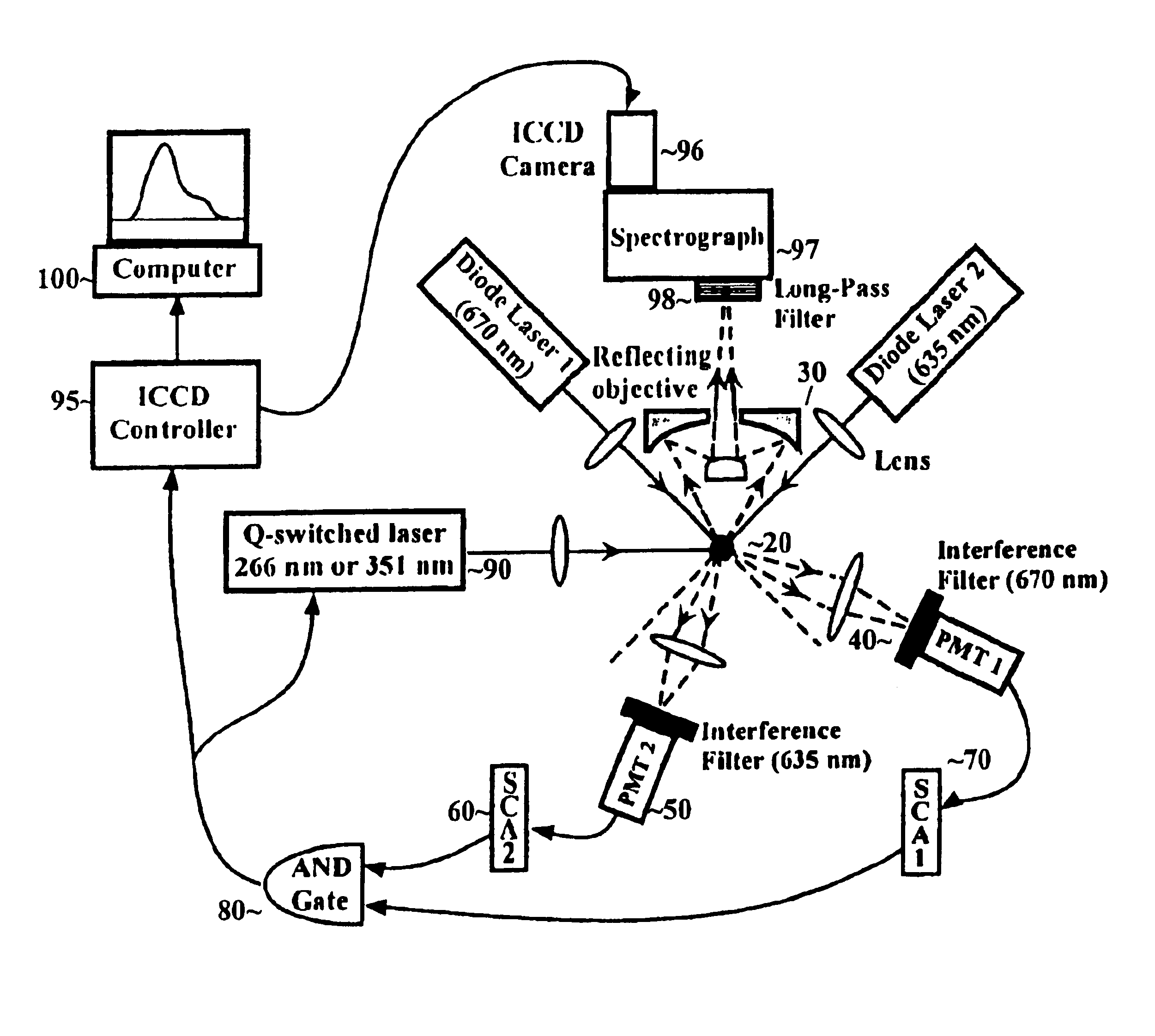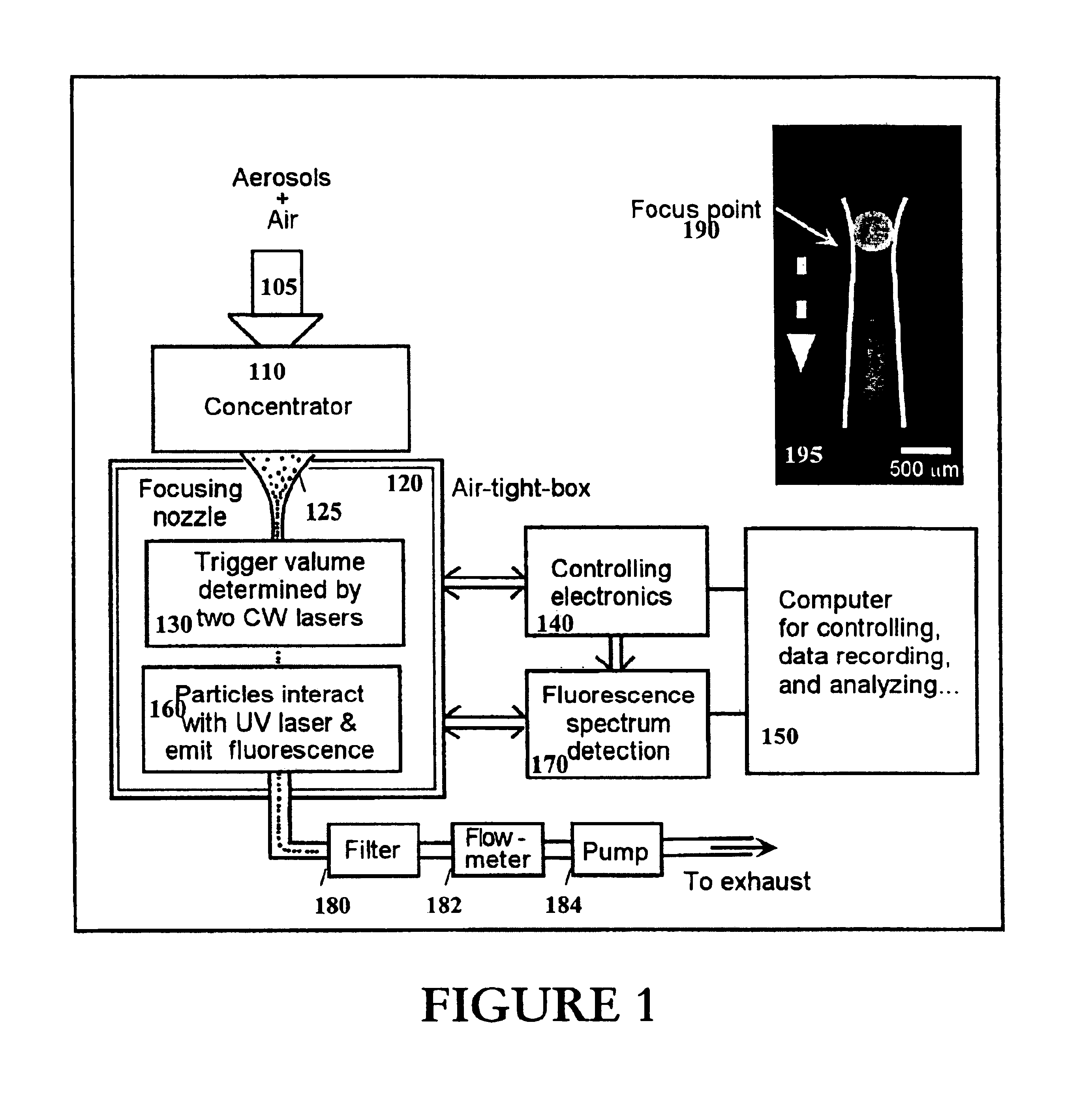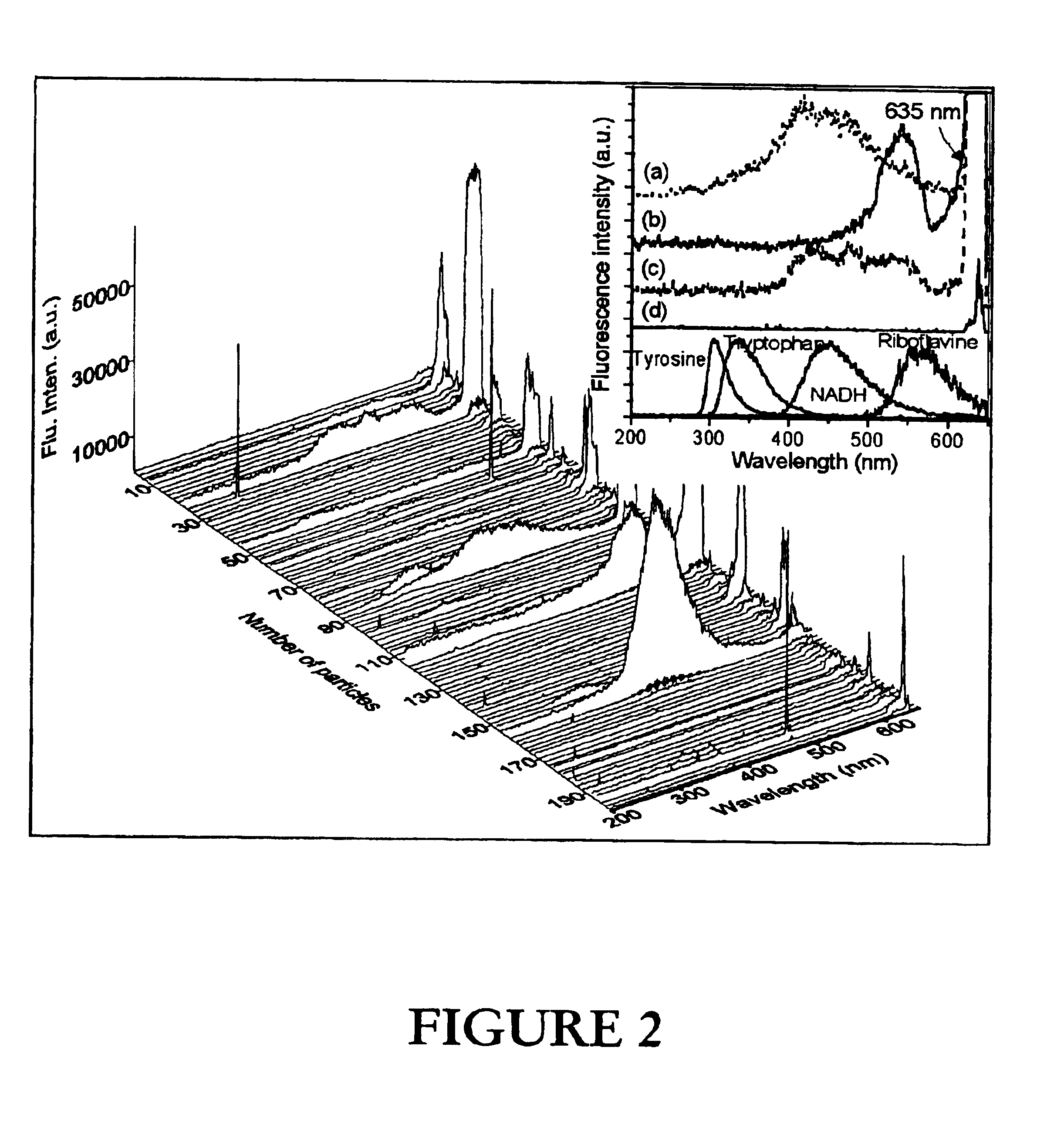Method and instrumentation for measuring fluorescence spectra of individual airborne particles sampled from ambient air
a fluorescence spectrum and airborne particle technology, applied in the field of fluorescence spectrum analyzers, can solve the problems of inability to sample the ambient environment of the prototyping detector for measuring single particle spectra, and the sample rate is so small (less than 0.01 liter/min) that it is impractical for most applications, and achieves reliable and rapid fluorescence spectrum detection. , particle
- Summary
- Abstract
- Description
- Claims
- Application Information
AI Technical Summary
Benefits of technology
Problems solved by technology
Method used
Image
Examples
Embodiment Construction
[0040]An aerosol fluorescence spectrum analyzer according to the present invention (AFSA) has distinct advantages. It may detect most bioaerosols in real time without using reagents, and be able to detect minority types of particles even when they are mixed as a tiny concentration with nonbiological particles. AFSA's according to the present invention may be useful for classifying atmospheric bioaerosols into some as yet unknown set of classes, even for particles as small as 2 micrometers in diameter.
[0041]Aerosol Fluorescence Spectrum Analyzers (AFSAs) rapidly measure the fluorescence spectra of single micrometer-sized biological particles (and other particles) in real time. The AFSA can measure single particle spectra with good signal-to-noise making it useful for classifying biological particles Measurements that the AFSA is capable of making are technically challenging for several reasons. First, fluorescence signals are small: the AFSA detects fluorescence from single particles...
PUM
| Property | Measurement | Unit |
|---|---|---|
| wavelengths | aaaaa | aaaaa |
| diameter | aaaaa | aaaaa |
| diameter | aaaaa | aaaaa |
Abstract
Description
Claims
Application Information
 Login to View More
Login to View More - R&D
- Intellectual Property
- Life Sciences
- Materials
- Tech Scout
- Unparalleled Data Quality
- Higher Quality Content
- 60% Fewer Hallucinations
Browse by: Latest US Patents, China's latest patents, Technical Efficacy Thesaurus, Application Domain, Technology Topic, Popular Technical Reports.
© 2025 PatSnap. All rights reserved.Legal|Privacy policy|Modern Slavery Act Transparency Statement|Sitemap|About US| Contact US: help@patsnap.com



